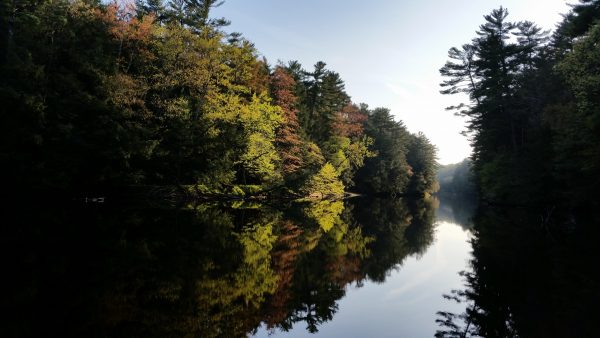We have started our transition from our summer camps to our fall school groups at Upham Woods. All of the students are beginning their school year and are excited to learn. We feel a change in the weather as the air becomes more crisp. The days start to get shorter with less sunlight and the temperature starts to drop. As we look around the Wisconsin River, some of the trees are beginning to change color.
We notice two main groups of trees on Blackhawk Island: deciduous and coniferous. Conifers, also known as evergreen, keep their needles all year round while deciduous trees lose their leaves. Before deciduous trees lose their leaves, they change color between September to November. When the days get shorter, with less sunlight, trees stop making chlorophyll. Chlorophyll is the green photosynthetic pigment found in leaves. The chlorophyll shortly decays over time; this allows the other pigments to show through. The colors we normally see are brilliant oranges, reds and yellows.
Then, the trees’ metabolism, growth, and energy slow so they can conserve energy. Trees will transfer their sugars and nutrients to their roots for storage. This process is helping them transition into the next season.


